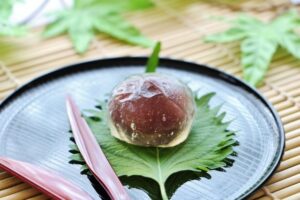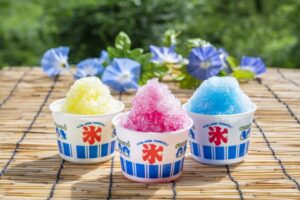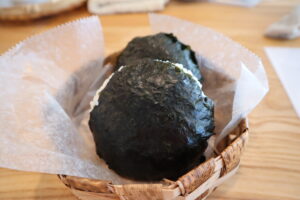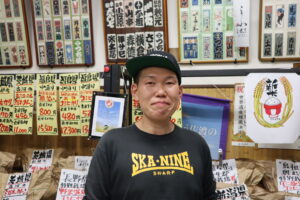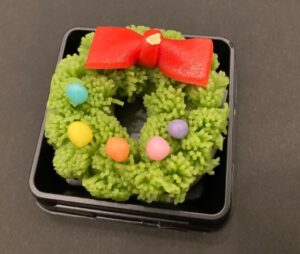Happy New Year! 2024 has begun.
In Japan, people greet each other with “あけましておめでとう” (: Akemashiteomedetou), which means “Happy New Year.”

Today, I’ll introduce how the New Year is celebrated, focusing on food.
New Year’s Eve soba noodles,”年越しそば” (Toshikoshi soba)
First, on the night of December 31st, people eat “年越しそば” (Toshikoshi soba), which is a tradition dating back to the Edo period. It can be enjoyed at soba restaurants or prepared at home.
Toshikoshi soba is eaten as a traditional dish to celebrate the end of the year and the beginning of the new year. Soba noodles, with their thin and elongated shape, are considered symbolic of longevity and health. This elongated shape represents the end of the past year and the beginning of the new year ahead.
The following image shows the soba my family had at home.
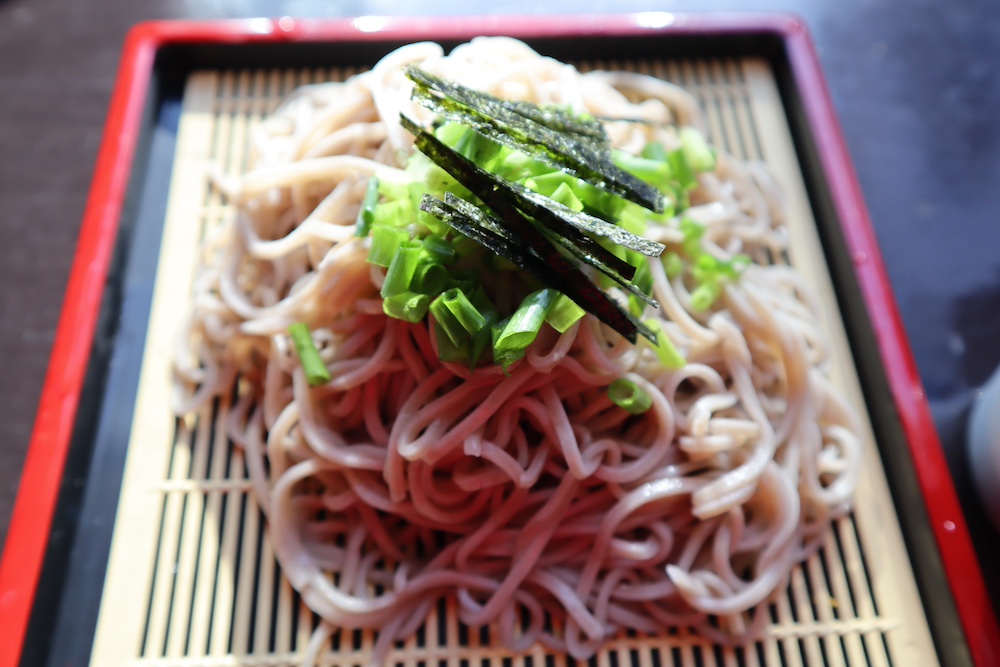
New Year’s Eve is also associated with the “紅白歌合戦” (Kouhaku Uta Gassen), a music competition that used to be a common tradition during the Showa era.
Nowadays, people have various ways of spending the night, such as going out to celebrate with friends or going for the first shrine visit of the year.
A New Year’s decoration at the entrance, serving as a signpost to the deity, “門松” (Kadomatsu) and “しめ飾り” (Shimekazari)
Now, it’s New Year’s Day. This year, I returned to my parents’ house, spending a quiet New Year’s day with my mother. Since my father was hospitalized, and my brother’s family was traveling, it was a peaceful New Year’s day with just the two of us.
My home is about a 30-minute drive from my parents’ house. When I arrived at 10 a.m., I found decorations like “門松” (Kadomatsu) outside the front entrance. Kadomatsu is a decoration of pine branches traditionally placed to guide the deity of the New Year to the house.
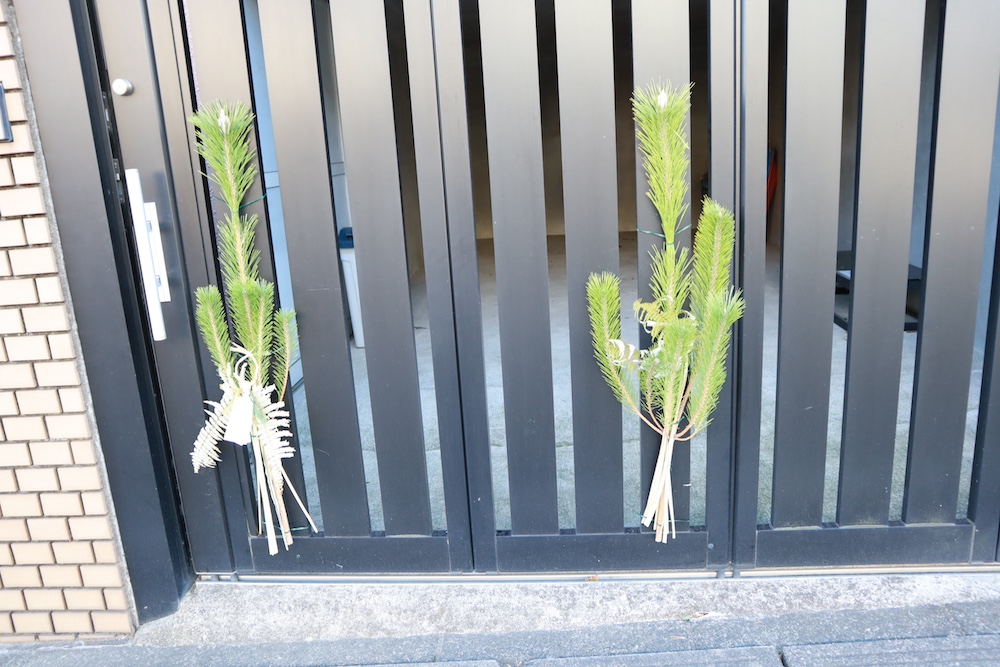
Another decoration near the entrance is “しめ飾り” (Shimekazari). Various designs exist, and I hung a handmade one in my apartment.

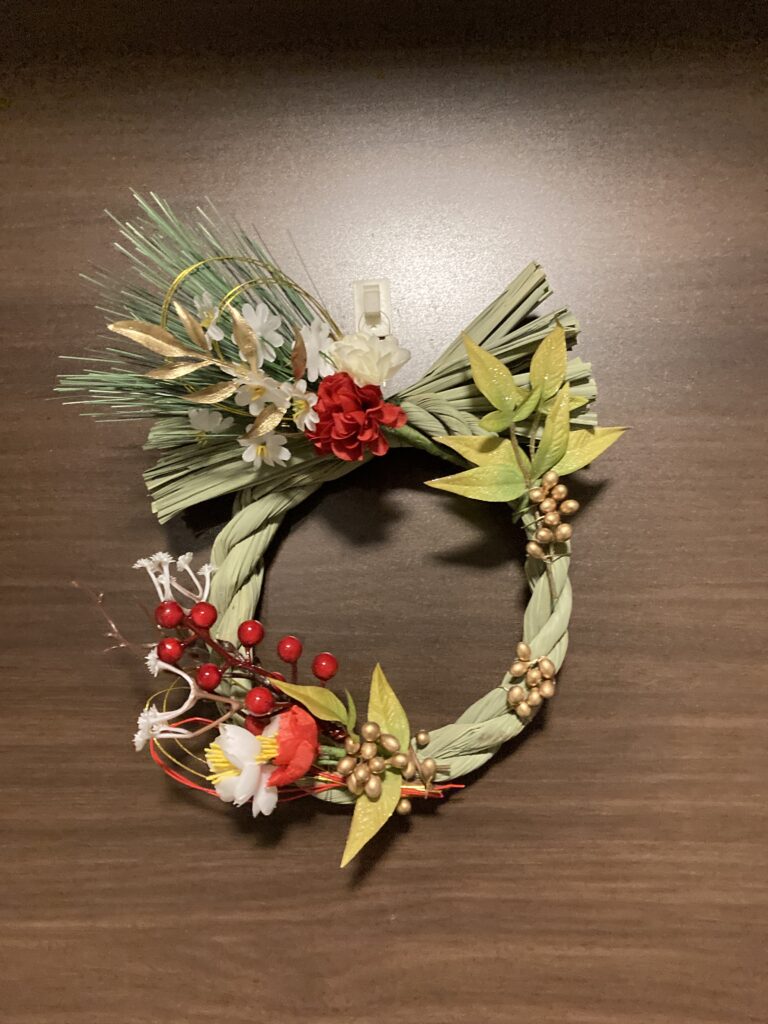
These New Year decorations are collected and burned in events like “どんと焼き” (Don to Yaki) or “お炊き上げ” (Osuiage) at shrines or in local communities, rather than being thrown away as regular trash.
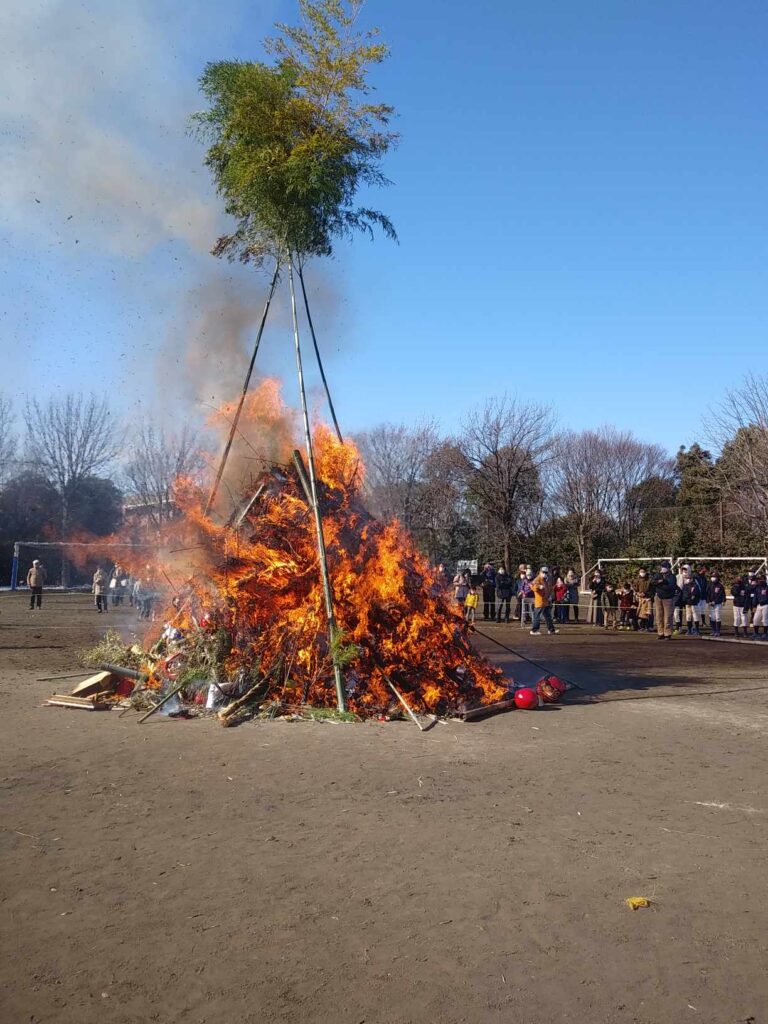

Upon entering, you’ll find “鏡餅” (Kagami mochi), a stack of round rice cakes topped with a mandarin orange and red and white paper. This is an offering to the deity, and the mochi will be eaten later during a ceremony called “鏡開き” (Kagami Biraki) on January 11th.
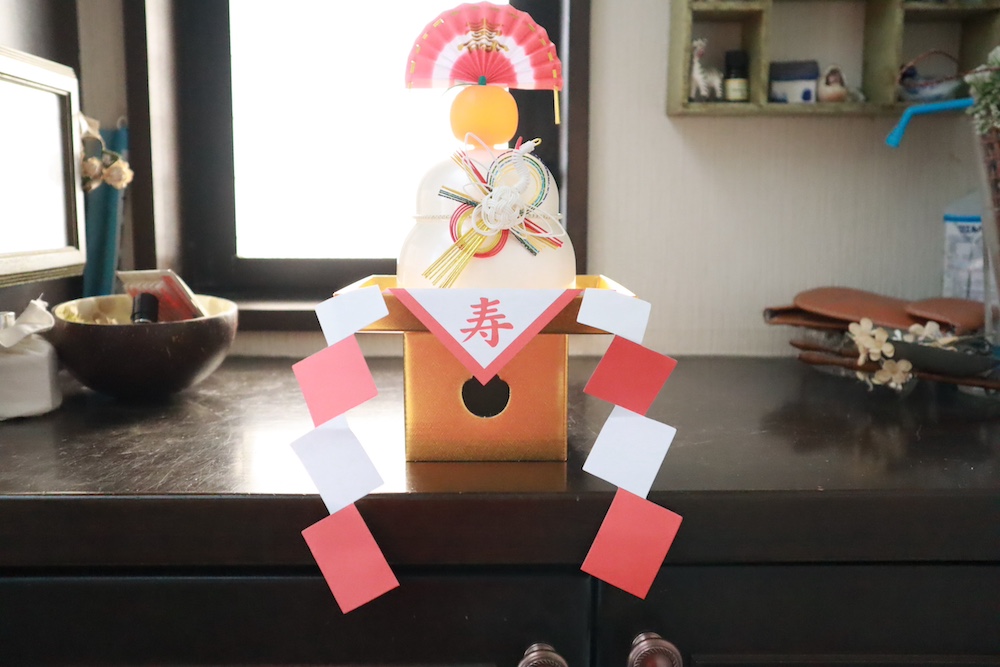
“Greetings of the season” were exchanged with my mother. On New Year’s Day, a formal greeting is exchanged within the family.
First, we offer greetings to the household Shinto altar,”Kamidana”.
We might seem devout, but we are not; it’s just relying on the deity for the New Year.
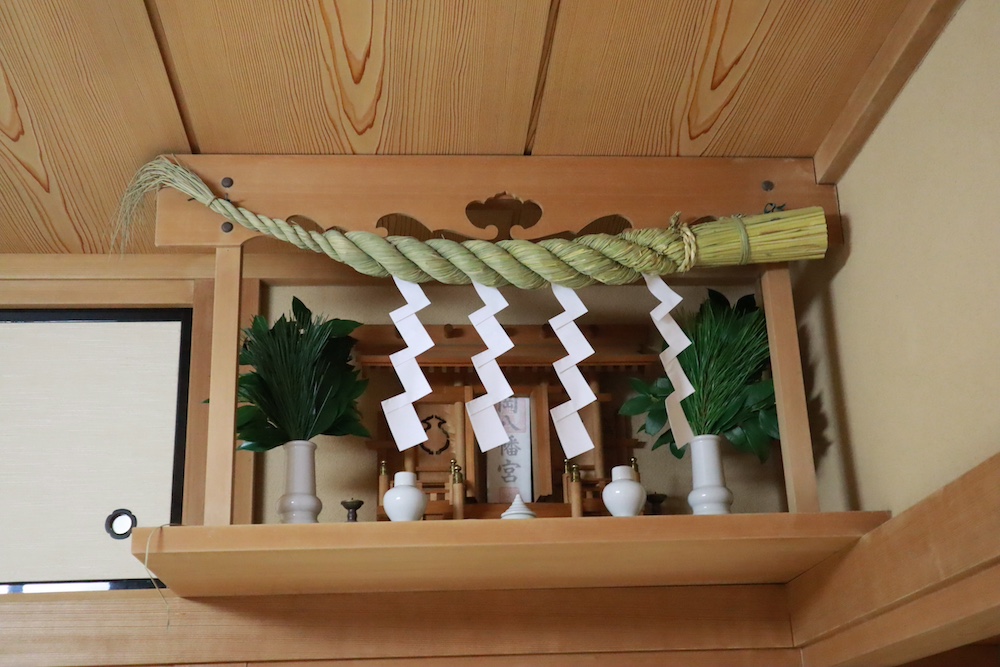
We also drink “お屠蘇” (Otoso), a sweet medicinal sake believed to bring good luck, especially when consumed in small sips from an orange-lacquered cup.
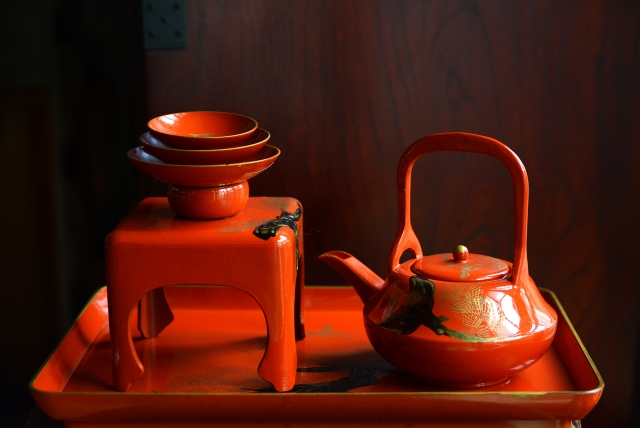
“おせち” (Osechi), special New Year’s cuisine
Now, let’s have some “おせち” (Osechi). Osechi is a traditional New Year’s dish featuring various symbolic items beautifully arranged in lacquered boxes. This year, we ordered a deluxe osechi set for around 25,000 yen.
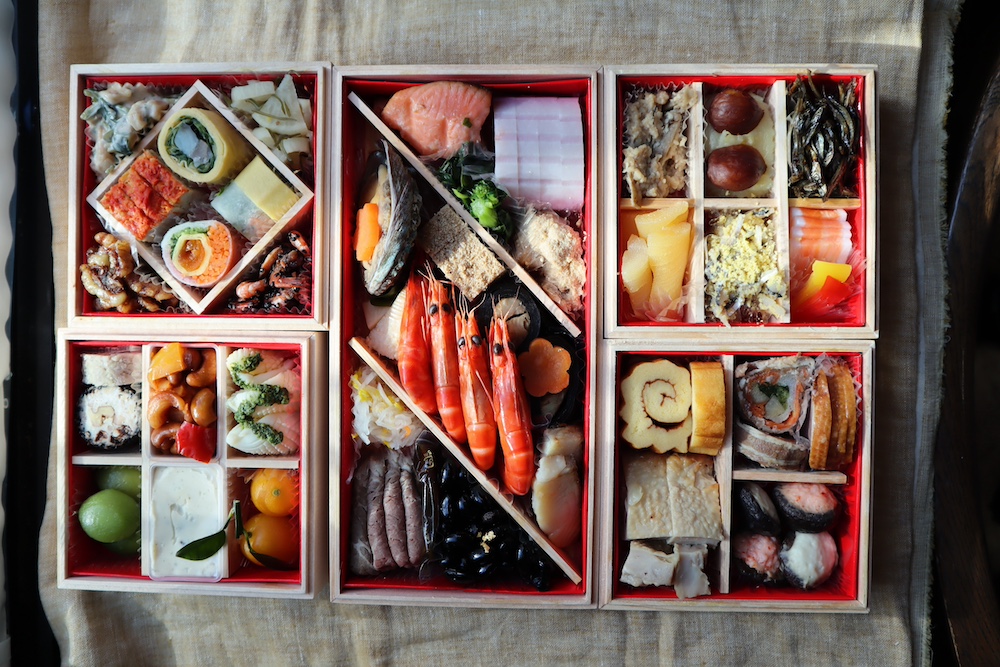
In the past, many people used to make osechi themselves before New Year’s Eve, avoiding cooking for the first three days of the year. Osechi dishes are often long-lasting, designed for consumption over the New Year’s period. Nowadays, many people opt to buy osechi rather than making it.
Here are some of the osechi dishes we enjoyed:
• “黒豆” (Kuromame): Sweet black soybeans, symbolizing diligence.

• “くりきんとん” (Kurikinton): A sweet dish made from chestnuts and sweet potatoes, believed to bring wealth.
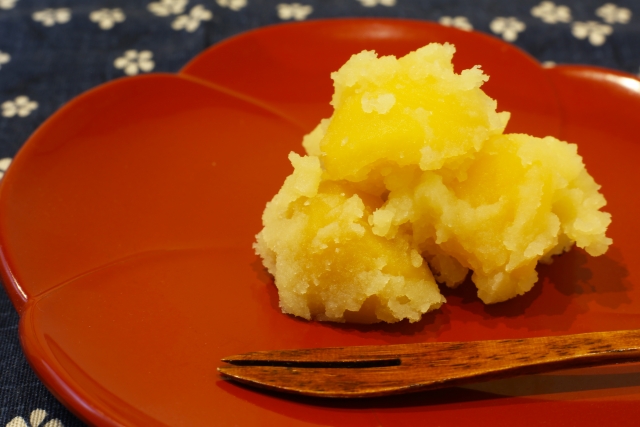
• Red and white “かまぼこ” (Kamaboko): Representing the first sunrise of the year.
• “えび” (Ebi): Shrimp, symbolizing auspiciousness and long life.
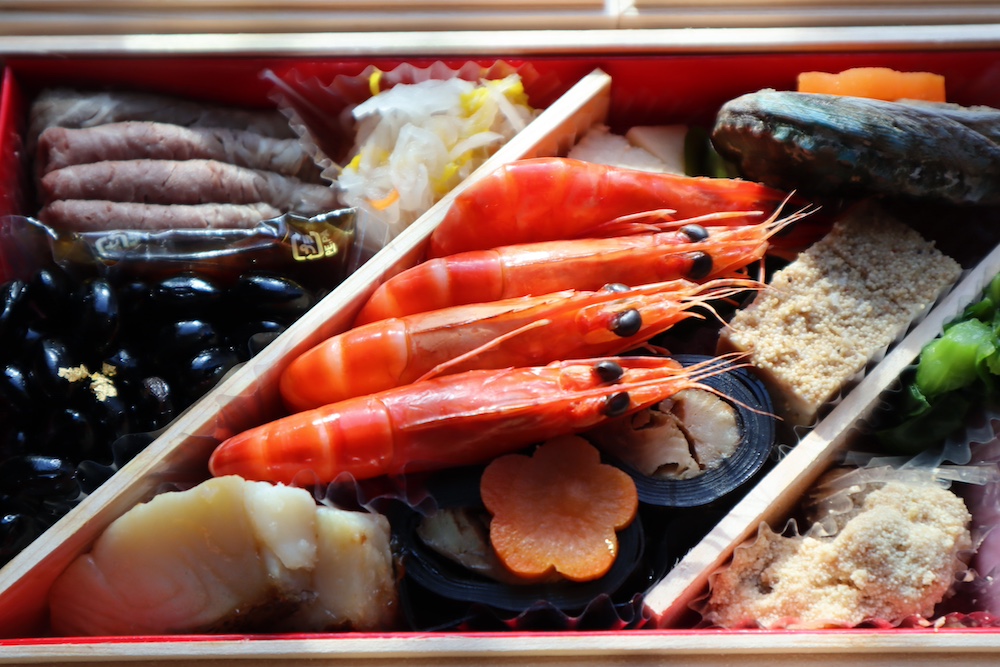
• “田づくり” (Tazukuri): Dried small fish (Katakuchi Iwashi) stir-fried with soy sauce, mirin, and sugar.

• Red and white “なます” (Namasu): A salad of thinly sliced carrots and daikon radish seasoned with vinegar.Captured below is my mother’s special dish, which includes not just carrots and daikon radish, but also kombu seaweed and apricots.
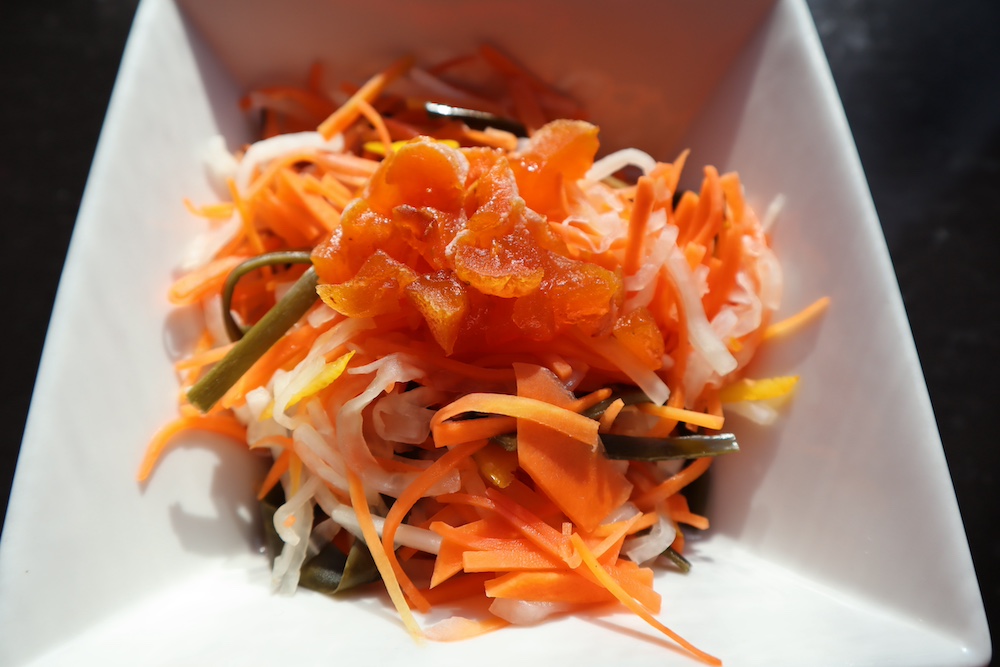
• “伊達巻” (Datemaki): A sweet rolled omelet made with eggs, fish paste, and sugar.
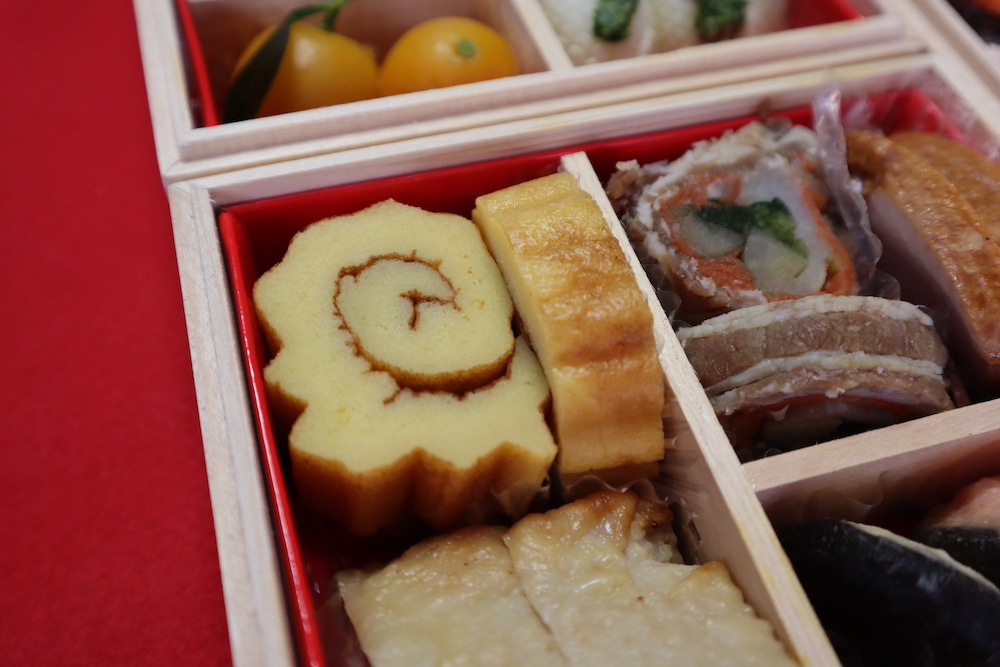
• “数の子” (Kazunoko): Herring roe, representing a prosperous family with many children.

Osechi is not only symbolic but also serves as preserved food. It’s best enjoyed in small portions with some sake.
In addition to the traditional osechi, we also had crab, specifically Taraba crab, a yearly tradition in my family. We also enjoyed other delicacies like roast beef.
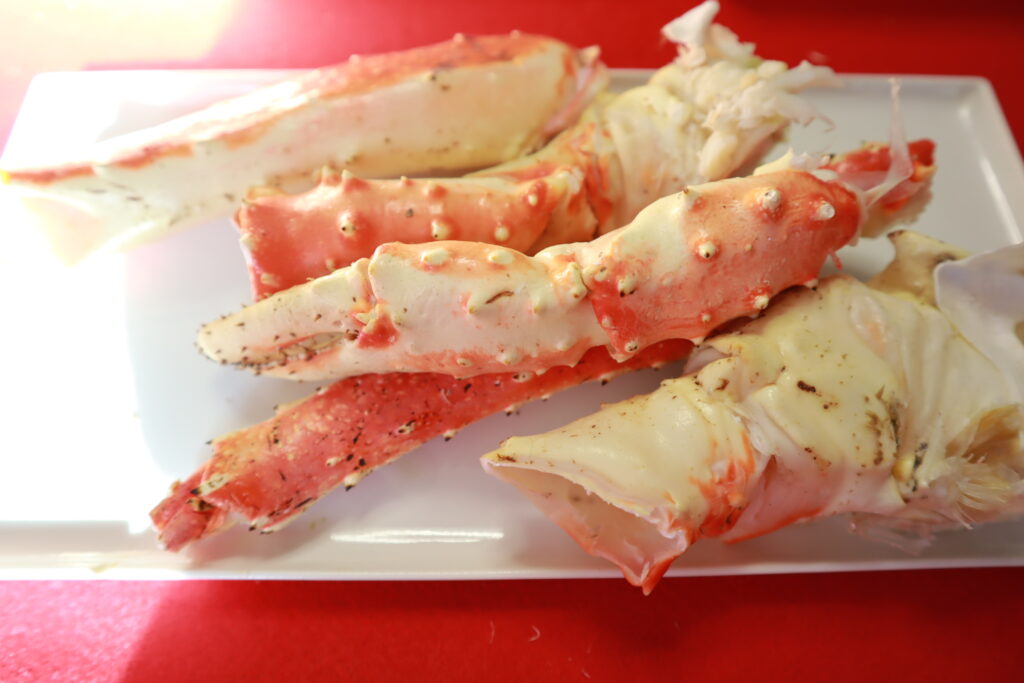
To be continued in Part 2.




